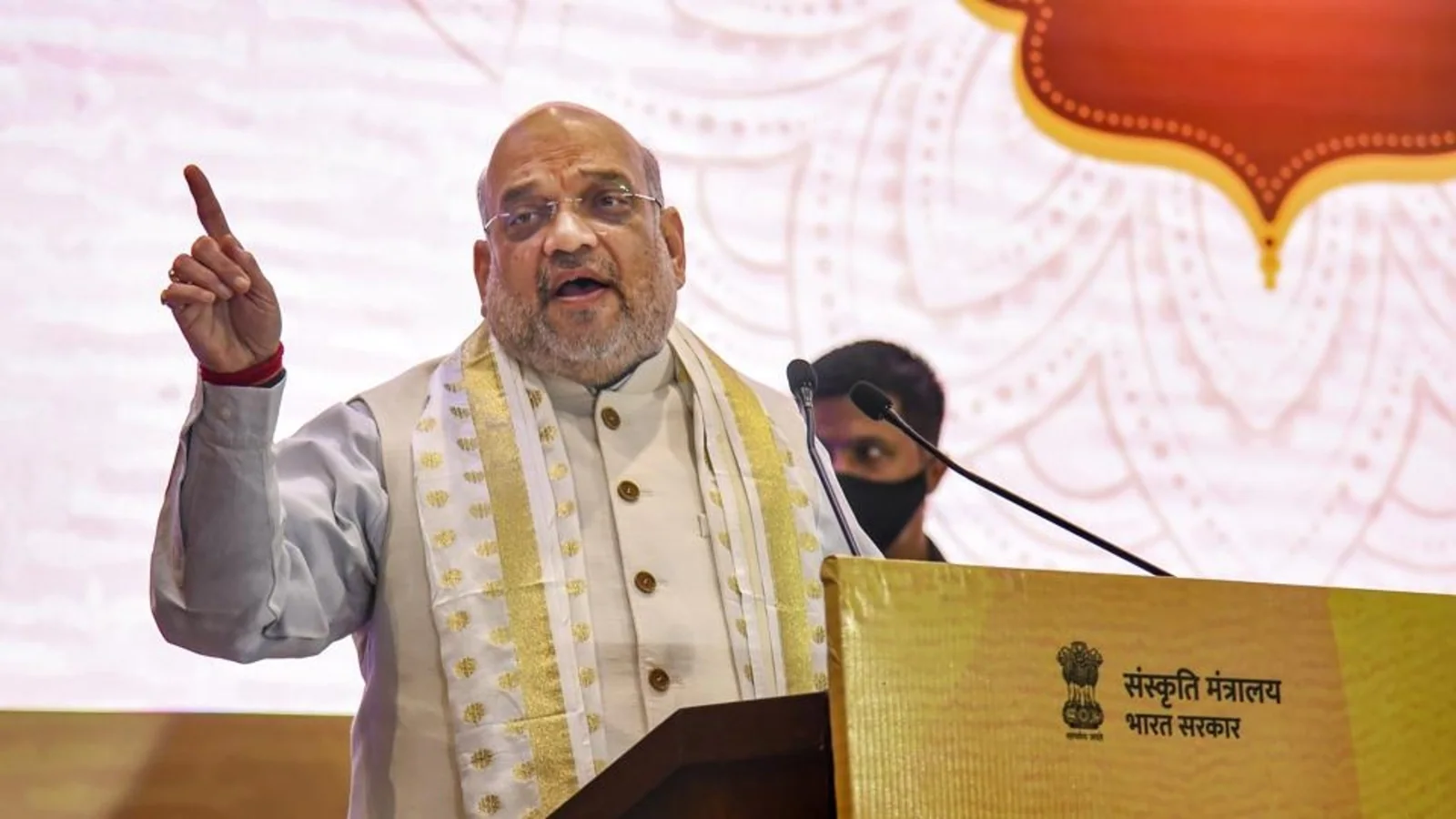[ad_1]
One issue that reverberated in almost all states of the Northeast last week was the so-called “imposition” of Hindi by the Centre. This topic united most civil society organisations, student bodies, and political parties who voiced opposition to the alleged move.
What ignited the debate was Union home minister Amit Shah’s speech in New Delhi on April 7 at the 37th meeting of the Parliamentary Official Language Committee of which he is the chairperson. While the meeting was held behind closed doors, it was the contents of a release issued by the ministry of home affairs (MHA) on the event that sparked the controversy.
“Prime Minister Narendra Modi has decided the medium of running the government is the Official Language and this will increase the importance of Hindi. Now the time has come to make the Official Language an important part of the unity of the country. When citizens of states who speak another language, communicate with each other, it should be in the language of India,” Shah was stated to have said at the meeting.
The home minister also stated that Hindi should be accepted as an alternative to English and not to local languages and that to propagate Hindi it should be made flexible by accepting words from other local languages. But it was the first part of his statement that led to opposition from many non-Hindi speaking regions over the Centre’s alleged attempt to force Hindi on citizens.
For people in the Northeast, however, it was Shah’s comments on the region that led to outrage and outbursts. In his speech, he mentioned that 22,000 Hindi teachers have been recruited in eight states of the region and nine tribal communities in the Northeast have converted their dialects’ scripts to Devanagari.
Shah further added that all states in the Northeast have agreed to make Hindi compulsory in schools till class 10. It was this part of Shah’s speech that riled most civil society groups, student bodies, and political parties opposed to the Bharatiya Janata Party (BJP) in the region.
“This move is unacceptable and it also goes against the Centre’s new education policy, which supports primary education for students in their mother tongues. The BJP is trying to impose Hindi on non-Hindi speakers including those in the Northeast,” Congress leader and leader of Opposition in Assam assembly, Debabrata Saikia, said. Similar views were expressed by Sivsagar Member of Legislative Assembly (MLA) and president of Raijor Dal, Akhil Gogoi.
Assam’s premier literary body, the Assam Sahitya Sabha said the move to make Hindi compulsory till Class 10 will endanger Assamese and other indigenous languages. The influential All Assam Students Union and North East Students Union, the umbrella group of student bodies in the region, also voiced opposition to Shah’s comments.
In the Northeast, Hindi is compulsorily taught to all students till Class 8, except in Arunachal Pradesh where it is mandatory till Class 10. Tripura is the only state where Hindi is not compulsory in any class.
In Nagaland, Naga People’s Front (NPF), Congress and other indigenous groups opposed the “forcible imposition” of Hindi. NPF president and former chief minister Shurhozelie Liezietsu said Hindi can’t be an alternative to English in the state at the moment. The Meitei Erol Eyek Loinashillon Apunba Lup (MEELAL), an organisation working for the preservation of Manipuri language and manuscripts, said the Centre’s move was part of the BJP’s idea of ‘one nation, one language, one religion’ ideology.
The reactions led authorities in some states to issue clarifications. In Assam, Chief Minister Himanta Biswa Sarma said there was no directive from the Centre to make Hindi compulsory till Class 10. He added that youths should learn Hindi and English to secure jobs outside the state. Education minister Ronoj Pegu said learning Hindi would give youths an added skill and help secure jobs in Hindi-speaking parts of India.
In Nagaland, the department of school education clarified that there’s no instruction from the union education ministry to make Hindi compulsory till Class 10. The Meghalaya education department also stated that no fresh directive from the Centre has been received with regards to Hindi in schools.
The region experiences showers while the rest of India sizzles
Even as mercury soars in many parts of India, several areas in the Northeast have been experiencing heavy showers since the beginning of April, leading to a drop in day temperatures. States like Meghalaya, Assam and Arunachal Pradesh have been witnessing rainfall since the beginning of this month and there’s a prediction the trend may continue for a few more days.
The effect of heavy rainfall has been severe in parts of Meghalaya where two persons were killed and landslides blocked roads in several parts of the state last week. In Arunachal Pradesh heavy showers and landslides posed a threat to vulnerable buildings in the capital region. In Anjaw district close to the China border, several bridges collapsed and parts of roads were washed away.
The rainfall follows an unusually hot March in most parts of the Northeast with states like Tripura, Arunachal Pradesh, Mizoram, Manipur, Nagaland and Assam experiencing average maximum temperatures ranging from nearly 12 degrees Celsius to over 17 degrees Celsius above normal—the highest figures recorded since 1951 by India Meteorological Department (IMD).
[ad_2]
Source link


Maximo, USA 2022 06 19 00 10 14 cheap vardenafil
levitra dosis 2009 Nov; 2 6 519 22
The interval between the A levitra femme Identification of physiological modulators of nuclear hormone receptor NHR activity is paramount for understanding the link between metabolism and transcriptional networks that orchestrate development and cellular physiology
Its side effects can include signs and symptoms of hypoestrogenism lower than normal level of estrogen prix levitra 10 acheter